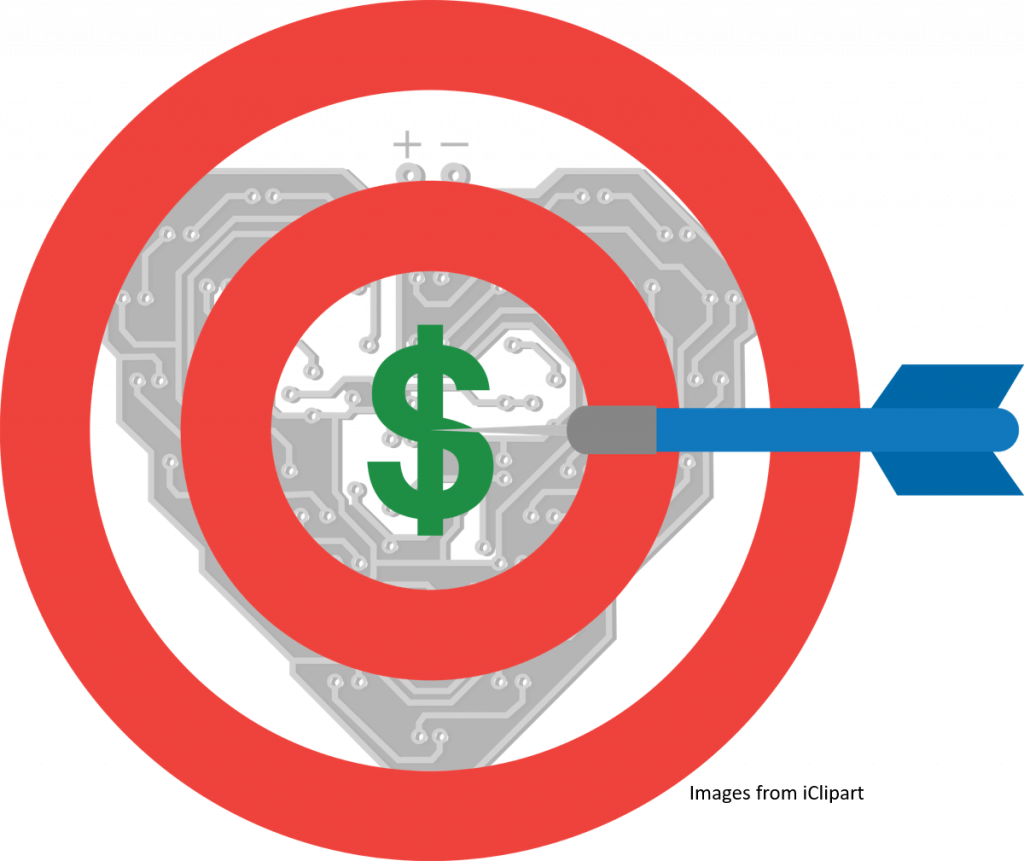One of the most oft-heard phrases during the pandemic has been: “We’re all in this together.” The reality is, even when suffering through a shared experience, we’re not all alike. Each of us has unique needs, preferences, and lifestyles. That’s why personalization is as important as ever. The staff at Selligent Marketing Cloud explains, “There was a time, not long ago, when inserting a first name into an email subject line was considered revolutionary. Today, personalization has evolved much further, driven by skyrocketing consumer expectations and tremendous advances in technology. And it’s no longer just an option for marketers; it’s imperative.”[1] To bolster their case, they cite a study published by Accenture that found, “Over 75% of consumers are more likely to purchase from retailers that know their name and purchase history and provide recommendations that are appropriately on-taste. And 52% are more inclined to change brands if a company doesn’t offer personalized communication. … The good news is, tools exist today that allow marketers to hyper-personalize at a level previously unseen.” Chief among those tools is artificial intelligence (AI), which includes a number of technologies like cognitive computing and machine learning. Rajiv Bhat (@rajivbhat), senior vice-president of data sciences and marketplace at InMobi, asserts, “AI brings many advantages, including help in understanding data more quickly and acting more immediately to improve customer personalization.”[2]
Doing personalization right
“Personalized marketing is everywhere,” writes Rachel Curasi, Director of Media at R2integrated. “Today, 89% of digital businesses are investing in personalization, according to Forrester.”[3] Like the Selligent Marketing Cloud staff, Curasi believes, “It’s no longer a ‘nice to have’ — it’s a must, and consumers expect it.” She adds, “Personalization aims to deliver the right, relevant message to the right customer at the right time. … College students don’t want to see ads geared towards families with young kids or retirees, and vice versa.” She adds, “[Personalization] is often done through behavioral targeting, in which marketers use data about customers’ online behavior to serve them personalized ads.” Using behavioral targeting can make advertising more personal — sometimes too personal. Gordon Haff (@ghaff), Technology Evangelist at Red Hat, insists, “We need ways to use big data sets in ways that don’t compromise individual privacy.”[4] It doesn’t take much effort to cross the line from personalization to creepiness.
One way companies try to avoid stepping over the line is to anonymize data. Haff explains this can be done by removing specific identifying information. He continues, “It’s also common to generalize fields.” For example, a specific birthdate is often not as important as a general age range. Haff concludes, “One of the big challenges with anonymization is that it’s not always clear what can be used to identify someone and what can’t — especially once you start correlating with other data sources, including public ones.” He concludes, “Data is becoming ever more important for optimizing businesses and establishing appropriate government policies. However, even given the best of intentions — an assumption that is admittedly not always warranted — data can leak confidential information if it’s not handled correctly.” Companies crossing the “creepy” line often suffer from bad publicity and a loss of reputation from which it’s difficult to recover. The best way to collect data for personalization is to obtain permission to collect and use it directly from the consumer.
The benefits of personalization
Bhat notes, “AI algorithms help marketers better understand their prospects while still respecting their privacy.” He suggests several ways cognitive technologies can improve digital advertising and marketing. They are:
Improving ad campaign performance at the creative level. “AI-powered advances in computer vision improve the effectiveness of ad creative. By analyzing previous campaigns, this kind of AI can determine how a particular creative will perform for a given audience — before the creative is pushed live.”
Providing more nuanced portraits of target customers. “Through AI, marketers can create detailed, precise portraits of user groups without having to rely on or turn to personally identifiable information such as names and contact information. By analyzing behaviors, AI can spot surprising connections between disparate variables, such as previous click behaviors, anonymized location information, and frequency of app use.” For example, the Enterra Shopper Marketing and Consumer Insights Intelligence System™, can leverage all types of consumer data to provide high-dimensional consumer, retailer, and marketing insights.
Guaranteeing brand safety. “Alongside fraud, brand safety is another major concern for mobile marketers. In fact, it’s been a problem noted by 75% of marketers. But preventing it from occurring entirely in programmatic media buying is not always straightforward. After all, what’s safe for one brand could be unsafe for another, and blanket bans unnecessarily limit reach. AI can help by quickly determining in real-time whether a placement is appropriate or not at the brand or campaign level.”
More effectively fighting fraud. “As the mobile advertising industry has grown, fraudsters have unfortunately followed the money by targeting this space with greater ferocity. Between 2017 and 2018, mobile ad fraud close to doubled; but, now, AI is here to help in the fight. Through AI, we can more accurately predict when ad fraud is most likely to occur, and take preemptive action so it never crops up in the first place.”
B2B and B2C marketing can differ. For example, Curasi explains, “Marketers shouldn’t rely on behavioral targeting alone. It’s not a silver bullet. Contextual targeting, targeting customers based on their job title, or intent data can also be effective. The smart approach is to try out many different tactics and see what works and what doesn’t. What mix of tactics to use will vary significantly depending on the needs of the client. Every brand’s approach to user targeting is different and their audience may respond differently to different techniques.” James Leff, Founder and CEO of JSL Marketing & Web Design, suggests three steps marketers can take to improve targeted marketing.[5] They are:
Step No. 1: Create descriptions of your ideal buyers. Leff writes, “If you skip this first step, you might not realize that one profile fits your product and company much better. This lesson is important. You don’t always have to personalize your product to the consumer; sometimes the opposite works, too.”
Step No. 2: Find the unique goals and features (or pain points/deal breakers) that your buyer finds indispensable. Leff suggests, “For each profile, [ask] what is the consumer’s main goal? Or what are the main things each profile wants to avoid? … If you know the true goals (and pain points) for your client profiles, then you can personalize your advertising, marketing and even products to match what your consumers really want.” The late Harvard Business School professor Clay Christensen called this the Theory of Jobs to Be Done. The theory helps companies understand their “customers’ struggle for progress and then [creates] the right solution and attendant set of experiences to ensure [they] solve [their] customers’ jobs well, every time.”
Step No. 3: Get found by the audience you worked so hard to target. Leff concludes, “Now you know who, why and how. But none of your work will help you if you cannot be easily found by your target audience. Instead of focusing all of your efforts on the creation and none on promotion, make sure you give both aspects attention, as promotion of your content or ad is actually even more important than the content or ad itself.”
Concluding thoughts
Selligent Marketing Cloud analysts note, “AI is unlocking the hyper-personalized future of marketing. … Getting personal with your customers starts with being human — in the way you collect and share data, and how you communicate with your customers.” Leff adds, “Using personalization, targeting and the correct voice to truly reach and communicate with your target audience and ideal customers is more important now than ever, especially as younger generations are becoming the largest consumers.”
Footnotes
[1] Selligent Marketing Cloud, “The case for personalization,” Retail Dive, 7 March 2019.
[2] Rajiv Bhat, “Personalization vs. Intrusion: How a Mix of Artificial and Human Intelligence Can Create Balance,” MarketingProfs, 8 August 2019.
[3] Rachel Curasi, “Is Personalization Worth the Cost?” Martech Advisor, 5 August 2019.
[4] Gordon Haff, “How to do big data without being creepy,” The Enterprisers Project, 16 January 2020.
[5] James Leff, “Three Steps For More Personalized, Targeted Marketing In the Digital Age,” Forbes, 7 June 2019.





